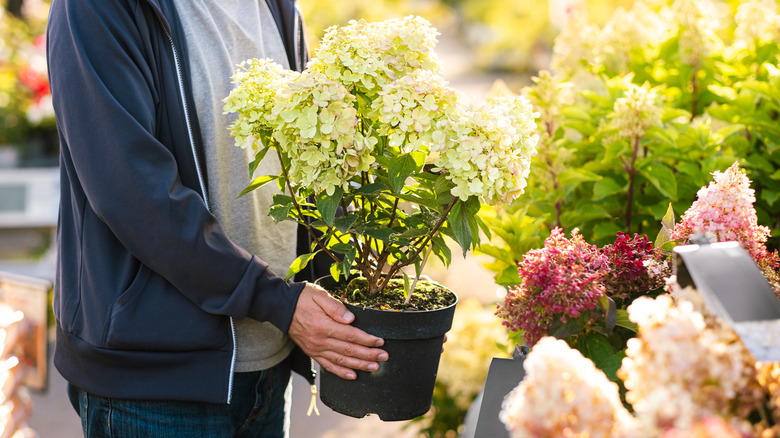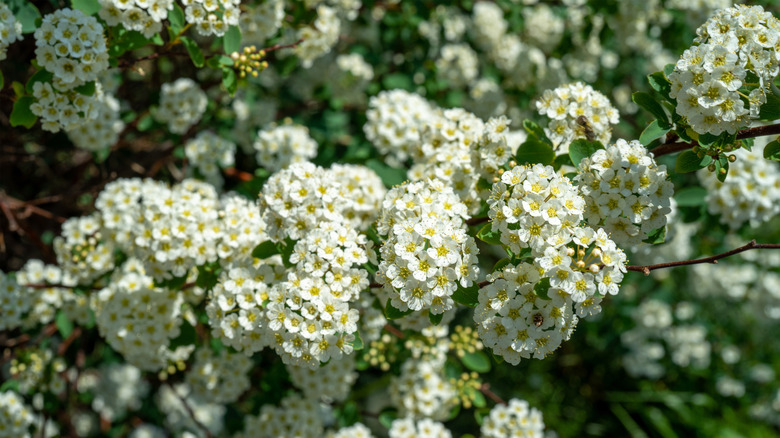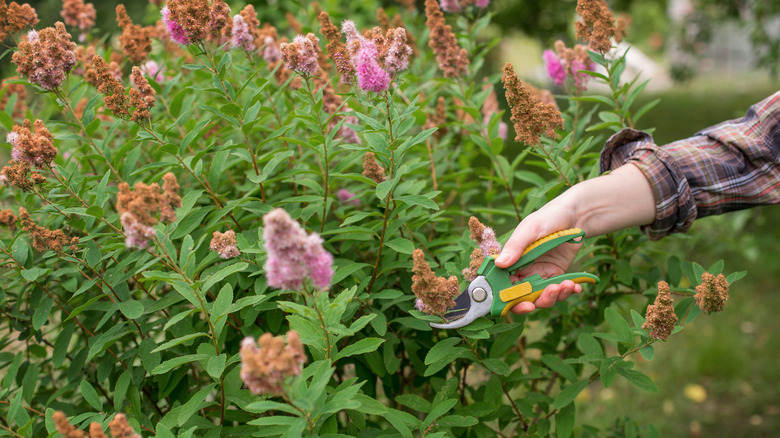Say Goodbye To Hydrangeas, Try This Look Alike Instead
Hydrangeas are a classic garden plant, with vibrant blooms livening up the spring, summer, and fall months. However, hydrangeas are not a good fit for every climate. Although fairly easy to care for, hydrangeas need to be kept moist and watered about once a week. They can also suffer during the hotter months, with leaf scorch and wilting common when the plants are losing more water than they can take in.
If your climate doesn't suit the needs of hydrangeas, but you love their appearance, there is a wonderful flower you should consider adding to your yard. Although not as well-known, meadowsweets have a similar shape and style to hydrangeas, but grow readily in almost every climate zone. These flowering shrubs come in a range of sizes, with some varieties growing up to eight feet tall. Meadowsweet flowers usually bloom in creamy white tones. However, certain varieties display hues of pink or red. These fragrant plants are great for butterfly gardens, too, with the insects flocking to their beautiful blooms in the summertime.
Which variety of meadowsweet should I plant?
There are several varieties of meadowsweet that you can bring into your yard, depending on what look you are going for and the conditions of your garden. However, you should try to avoid Japanese meadowsweet (Spiraea japonica), as this is considered invasive in many areas of the U.S. Instead, opt for birchleaf spiraea (Spiraea betulifolia) or bridal-wreath spiraea (Spiraea cantoniensis).
With its clusters of small white pom-pom-like blooms that decorate its arching branches, bridal-wreath spiraea has that classic hydrangea look. However, unlike hydrangeas, bridal-wreath spiraea is heat and drought tolerant. It can be grown in a range of soils, although it can suffer when planted in overly wet locations. This variety can grow to around six feet in height and spreads to five feet.
For a smaller, denser shrub that still has those iconic white clusters of flowers, birchleaf spiraea is a fantastic choice. This variety only grows to around three feet in height and width, creating a compact bush that is adorned with beautiful blooms in May, June, and July. Birchleaf spiraea is tolerant of a range of soils, and its foliage turns stunning shades of orange, purple, and red in the fall.
How to care for meadowsweet
Meadowsweets are super easy to look after. Most varieties are fairly adaptable and will be happy in many types of soil. However, for the best blooms, you should plant your meadowsweet in full sun. You should keep your meadowsweet watered during the first year to help it settle in. Once they have established themself, many varieties will withstand a little drought.
You should also prune your spiraea bushes to keep them looking neat, but when you do so depends on what variety you have. If you have a spring-blooming spiraea, give it a prune once its flowering has finished. Do this annually, thinning out old or weak wood as you do so. However, if you have a summer-blooming variety, you should prune it in winter or early spring. Deadheading meadowsweets throughout their flowering season is beneficial for all varieties, as it will promote fresh flowers.
In terms of pests and illnesses, meadowsweets can suffer from root rot when growing in poorly-drained soils. They may also be attacked by aphids in the spring. Thankfully, there are ways to get rid of aphids, such as insecticidal soap solutions, that can protect your plants and allow you to enjoy their blooms year after year.


